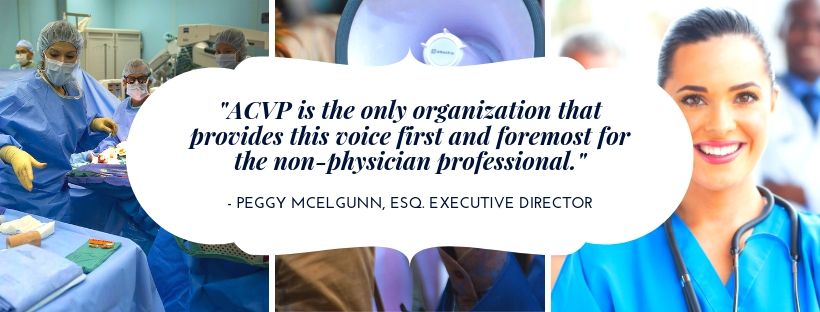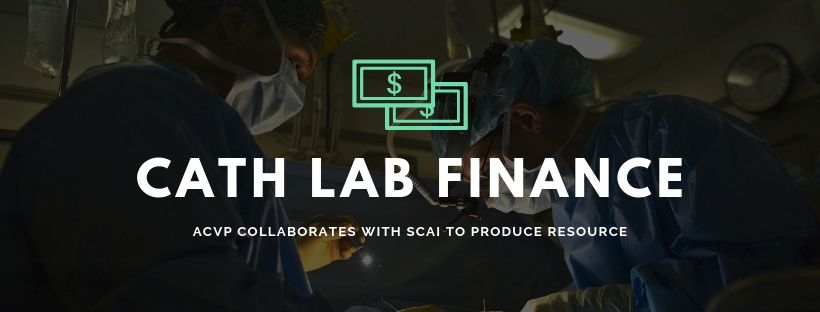A collaboration between the Society for Cardiovascular Angiography and Interventions and the Alliance of Cardiovascular Professionals produced an expert consensus statement outlining the general principles of cath lab finance - crucial considerations for cath lab managers and all cath lab staff.
The document was published online last week in the SCAI's Catheterization and Cardiovascular Interventions journal and endorsed by ACVP.
In a SCAI-TV video interview, James C. Blankenship MD. MHCM, MSCAI and Peter L. Duffy MD, MMM, FSCAI described the crucial importance of understanding cath lab finance and its impact on quality patient care.
"As we see health care evolving with new payment mechanisms coming on board, the incentives are going to change and the way that cath labs operate is going to have to change as well," said Dr. Blankenship. "Cath lab directors need to be able to talk to their administrative partners about the financial aspects of this and be able to advocate for patient care, which is sometimes more expensive, and make sure that they keep the cath lab solvent financially."
ACVP's Collaboration with SCAI "Critically Important"
When asked about the collaboration with ACVP, Dr. Duffy explained that involving both physicians and non-physicians, managers and administrators was "critically important" in producing this resource.
"Really this is a team sport, and [cath lab finance] is not just done by physicians," said Dr. Duffy. "It's going to be done by cath lab managers and by other professionals that work in and around the cath lab that have management skills that we as physicians don't have."
Both ACVP President Linda L Paxton, BSN, MBA and ACVP Executive Director Peggy McElgunn, Esq. contributed as authors on the document, which provides a conceptual framework for how non-physicians and administrators can directly impact quality care via cath lab finance and facilitate important discussions with physicians.
"[The document] gives our members a framework to participate directly in promoting quality care in the cath lab," said Mrs. McElgunn, Esq. "The intersection of economics and outcomes hinges on our members' work—what might be transactional for the hospital or scientific for the physician is a patient care relationship for our members."

ACVP Provides Non-Physicians a Voice
This collaboration deepened the Alliance of Cardiovascular Professionals' involvement in crucial conversations impacting quality in the cath lab and provided ACVP members with a voice as essential players in the cardiac care team.
"[This collaboration] gives non-physician professionals a voice not only with physicians but with hospital executives," said Mrs. McElgunn, Esq. "[ACVP] is the only organization that provides this voice first and foremost for the non-physician professional."
Consider joining the Alliance of Cardiovascular Professionals to support fellow non-physicians in the cath lab and all cardiac care environments. ACVP membership also provides you access to an expert network with deep, practical expertise and insight into cath lab finance.
A Detailed Resource on Cath Lab Finance and Revenues
The document itself is also an excellent learning resource for administrators who may be new to the cardiac cath lab environment, detailing many financing and coding specifics.
Fundamentally, the document examines important considerations for improving cath lab efficiency and outcomes to positively impact the bottom line on both the cost and revenue side of the of the cath lab finance equation.
At a time when hospital CEOs are turning the focus from cost containment to revenue growth, according to a recent Health Care Advisory Board survey, the document provides particularly useful perspectives on the revenue side. The authors stress the importance of thoroughly and properly documenting and coding co-morbidities, which can significantly increase reimbursement by as much as 50 percent in some instances.

Has anyone involved with SCAI and ACVP ever been educated and trained in procedural cost analyses that invokes sound revenue reimbursements from Medicare, Medicaid and Medical Insurance Entities? I have automated forms that I developed from hardcopies that have been in my personal hardcopy files for 35 years. With my first involvement to straighten out a CCL system in 1981, the previous year the CCL only did 600 patients in the year and generated $240,000 with $238,000 in expenses. In 1984, the annual caseload was 1600 with an annual revenue of $ 3,700,000. In 1983 I was asked by a president of another hospital to design a cath lab system for his facility. The task was done with the help of a team of 25. I trained several of the members in cost analyses. The CCL lab system open in 1985. By 1987 the lab was averaging 35 patients per room of which there were only 2 CCLs. The rooms were averaging 3.2 patients per hour. The revenue was legitimately gained. I left the system in 1990. I returned to visit in April 1994. The same manager debriefed me on the revenue. The 1984 fiscal year finished with 6500 patients (which included diagnostic and interventional) and 47% of the total revenue of the hospital was coming from the cath labs. EP studies were done in two other detached rooms from the main cath lab. Patients who had 80% percent coverage from insurers were having their bills paid 100%. The same had already happened at the previous system. Medicare was paying 100% too. The operation was averaging a 20% cost containment. The other factors were working with vendors based on volume along with working with assigned representatives from Medicare annually before the new fiscal year began. Same experiences with private insurance companies and HMO’s.